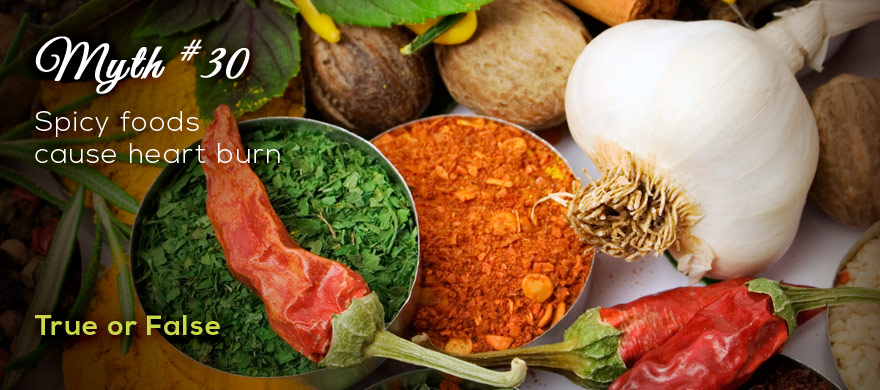
False.
A few years ago I was at a social gathering at which there was a variety of hot and spicy foods available. I’ve never been one who enjoys foods that make my eyes water and give me a runny nose, but for some reason seeing others indulge in jalapeno peppers and extra hot chicken wings made me feel inadequate. That experience propelled me to start a journey, a training program of sorts, to build up my tolerance for hot and spicy foods. My training started by replacing the mild salsa in our refrigerator with the medium variety and eating a few pickled jalapenos I got from my neighbor. As I battled through the uncomfortable burning and sometime painful sensations on my tongue and in my mouth, I fully expected my venture into the world of fiery foods to result in intense heartburn but, surprisingly, it didn’t.
Heartburn is the painful burning sensation felt behind the breast bone. Chronic heartburn is called Gastroesophageal Reflux Disease (GERD). The cause is related is related to stomach acid flowing back up the esophagus resulting in irritation and discomfort. There are many supposed contributors to GERD, some of them include consuming things like chocolate, mint, and alcohol as well as eating beyond the point of being full, certain medications, body position when sleeping, and smoking. Many people also believe that eating spicy food contributes to heartburn, but research suggests this might not be the case. Authors of an article published in the journal Archives of Internal Medicine (2006) reviewed most of the previous studies done on GERD and stated there was little research evidence to suggest spicy foods contributes to GERD or that eliminating spicy foods from the diet decreases GERD symptoms. The authors did conclude that losing weight and elevating the head and upper back while sleeping were effective lifestyle interventions for reducing GERD.
Reference:
Kaltenbach T, Crockett S, Gerson L: Are lifestyle measures effective in patients with gastroesophageal reflux disease? An evidence-based approach. Archives of Internal Medicine (2006), Vol 166, pps. 965-971.
